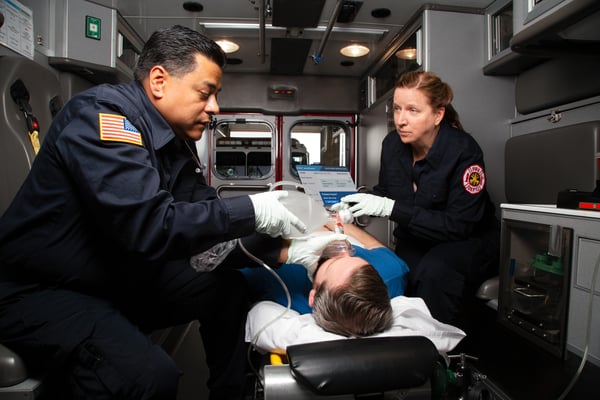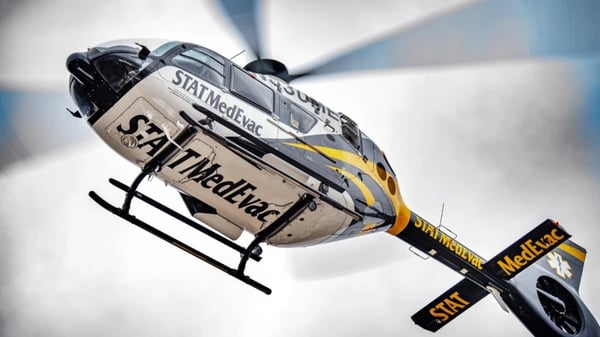News Alert: New ePCR Integration Simplifies EMS Data Management and Enables Better Care Coordination
Train Your New Gal (and Old Guy) on Documentation
(5 Min Read) Let's face it, a one hour of discussion about threatening lawsuits or a courtroom credibility shredding during someone's initial EMS education is hardly motivating
Was this information valuable?

(5 Min Read) Let's face it, a one hour of discussion about threatening lawsuits or a courtroom credibility shredding during someone's initial EMS education is hardly motivating ... or even positive habit forming!
It's become clear that to get your new employees off to a good start – or to keep your tenured providers producing positive outcomes - documentation training falls into the hands of EMS agencies, yours included!
This can be a rather daunting task as it's quite time consuming and individual-critical. No wonder why we shy away from it, especially in markets where there's a revolving door of EMS providers!
Is this necessary? Is there a less-stressful, or less-critical way to accomplish this? Can you "teach an old dog new tricks" ... or even a "new guy" how to document like a seasoned pro?
Yes – on all accounts – and here are five insights to help start you on the right track.

1. Explain the purpose
Why do I need to do this? What is this going to accomplish? Who really cares? Where does this report even go? How does this impact me?
Many of us within the EMS community want to accomplish this one, simple, task - we want to do the right thing. Whether that's administering the right medication, calculating the right dose, or determining the right transport location - we want to do what's right. Even one step beyond that - we want to understand why it's right.
Documentation is no different. If its sole purpose is to avoid us from seeing the inside of a courtroom, then one's quality really won't matter until it's called into question (which likely will never happen in most of our careers). As many of us know, however, documentation serves a purpose well beyond what Jack McCoy, Daniel Kaffee, or even Bull have to say about it.
So, why is this such a secret? Why don't we tell our providers about its importance ... where their report goes ... who sees it?
I would bet that if they truly knew what it was used for, who sees it, and how it pays for the agency to operate – its actual purpose beyond a courtroom – then they would certainly care a lot more about what they include into it!
2. If drop-downs don't provide the answer, then explain it!
In addition to the purpose behind documentation is the importance of its thoroughness.
Yes, there's a drop-down selection for "struck by a flying object while swimming in a pool, inside a motorized vehicle, while traveling on a train track," but not one for plain old "abdominal pain" (okay, that might be an exaggeration ... but you get the point!). Important for everyone to understand, moreover, is the "why" behind all of these anomalous drop-down selections.
Even more importantly is that understanding that selecting the best option is important, in addition to explaining the details (in free text form) behind whatever the drop-down selection doesn't clearly outline. After all, the drop-downs help to "objectivize" (put your selection into a data set) an otherwise subjective description. Free text, however, allows you to actually write what you heard, saw, felt, or even smelled.
3. Selecting "other" is a last resort
Rolling right into this insight, if the drop-down doesn't depict what you're trying to document in an accurate fashion, then selecting "other" may be your last resort.
In fact, selecting "other" should be exactly that, your last resort! Keep in mind, the answer that you want isn't always phrased the way that you believe that it should be, so you may have to search around a little bit before you make your final selection.
4. Tell the "story"
Regardless of which type of narrative or documentation format that you use, it's vitally imperative that your report be accurate, thorough, and that it tells the "story" of what happened. Pre-arrival complaints or patient actions, present findings, differential diagnosis and treatment plans, effects of your interventions, transport decision making - these are all essential components of a well-rounded (and thorough) patient care report.
"Standard protocol" is hardly a description or justification for your entire narrative. But, telling the "story," as it happened (chronologically preferred), certainly is!
5. Develop consistency (not complacency)
Developed over time, it's important to craft your writing (narration) into a consistent format that is easy to follow, reproduce, and uphold in terms of producing a quality product. You shouldn't have to re-invent the wheel with every narrative that you write; nor should you rely solely on an isolated & static template or phrases, either.
Rather, you should strive toward developing a writing flow that you can follow (and consistently type) - one that tells the "story" in a format that others can visualize" as if they were standing right next to you for the entire journey with your patient. You were dispatched to "this" ... arrived and found "that" ... the patient presented like "this" ... so you provided treatment based off of "that."

Over time, as a provider and professional, you’ll develop a level of consistency that you come to value because you’ve become well-versed in telling the “story,” selecting the right drop-down options, understanding why documentation is important, and realizing who it really impacts (regardless of how many years, or calls you have experienced). What kind of EMS administrator wouldn’t want that?!
Related Posts
How STAT MedEvac Connected Device, Software, and Data Technology To Enhance QA and Elevate Care
Podcast: 4 Ways ePCR Software Can Relieve EMS’ Biggest Headaches
ZOLL Pulse Blog
Subscribe to our blog and receive quality content that makes your job as an EMS & fire, hospital, or AR professional easier.
ZOLL Pulse Blog
Subscribe to our blog and receive quality content that makes your job as an EMS, fire, hospital, or AR professional easier.




